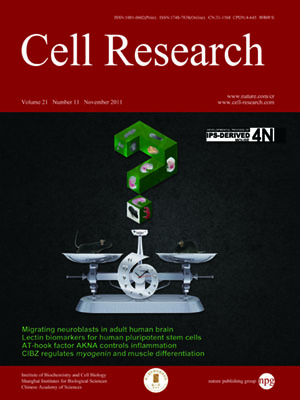
Volume 21, No 11, Nov 2011
ISSN: 1001-0602
EISSN: 1748-7838 2018
impact factor 17.848*
(Clarivate Analytics, 2019)
Volume 21 Issue 11, November 2011: 1605-1618
ORIGINAL ARTICLES
mir-35 is involved in intestine cell G1/S transition and germ cell proliferation in C. elegans
Min Liu1,*, Pengpeng Liu1,*, Li Zhang2, Qingchun Cai1,3, Ge Gao2, Wenxia Zhang1, Zuoyan Zhu1, Dong Liu1 and Qichang Fan1
1The Education Ministry Key Laboratory of Cell Proliferation and Differentiation and the State Key Laboratory of Bio-membrane and Membrane Bio-engineering, Peking University, 5 Summer Palace Road, Beijing 100871, China
2The Center for Bioinformatics, School of Life Sciences, Peking University, 5 Summer Palace Road, Beijing 100871, China
3Current address: Department of Obstetrics and Gynecology, Indiana University School of Medicine Indianapolis, Indianapolis, IN 46202, USA
Correspondence: Dong Liu, Qichang Fan,(doliu@pku.edu.cn qfan@pku.edu.cn)
MicroRNA (miRNA) regulates gene expression in many cellular events, yet functions of only a few miRNAs are known in C. elegans. We analyzed the function of mir-35-41 unique to the worm, and show here that mir-35 regulates the G1/S transition of intestinal cells and germ cell proliferation. Loss of mir-35 leads to a decrease of nuclei numbers in intestine and distal mitotic gonad, while re-introduction of mir-35 rescues the mutant phenotypes. Genetic analysis indicates that mir-35 may act through Rb/E2F and SCF pathways. Further bioinformatic and functional analyses demonstrate that mir-35 targets evolutionally conserved lin-23 and gld-1. Together, our study reveals a novel function of mir-35 family in cell division regulation.
Cell Research (2011) 21:1605-1618. doi:10.1038/cr.2011.102; published online 21 June 2011
FULL TEXT | PDF
Browse 2013


